Even at the beginning of the 20th century, a neurologist from Leipzig, Paul Julius Möbius, proved that women, with smaller heads and brains than men, were only fit for the "profession" of a mother. Women's university career was opposed by law, customs and ... their own families. And the universities? Bench ghetto was preparing.
Abroad, in disguise, or preferably not at all
Before Polish women could legally study at their home universities, they were admitted by universities in Switzerland, France, Belgium and Great Britain. This meant much higher costs of education, and most often also the need to validate the diploma, i.e. in practice:re-examination in the country
Moreover, the lives of female students abroad were not all roses. The poet and translator Maria Komornicka, who studied at Cambridge, complained that British emancipation was gold paper glued on the shackles, The rector there had the right to arrest any student who went out alone in the street in the evening!
No wonder that some women followed in the footsteps of Nawojka, a half-legendary 15th-century student who pretended to be a man when she wanted to get university education. This method was tried out by a talented illustrator, Zofia Stryjeńska. She studied at a German university for a year using her brother's papers.
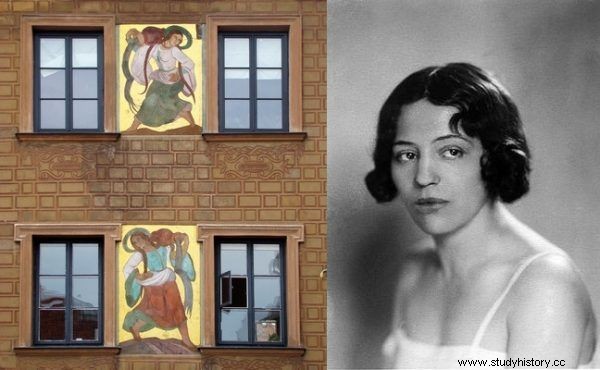
Zofia Stryjeńska (née Lubańska) decided to acquire knowledge using the Nawojka method. Before she was exposed, she studied for a year at the Academy of Fine Arts in Munich as Tadeusz Lubański. The effects of her academic momentum - frescoes on a tenement house at the Old Town Square in Warsaw - are shown on the left, and the artist herself on the right (public domain).
There were also significant risks involved in acquiring knowledge and wanting to pursue a career:teachers and government officials were prevented from getting married… and even legally prohibited! Only practical knowledge was required of women wishing to start a family. As one of the contemporary guides read:
Every woman should be able to cut and sew dresses and underwear, because it is a great saving and also a pleasant activity. Young girls should learn how to cut and sew, because it is more needed than other talents .
Long way to university
In Krakow, the first swallows of changes were the 27-year-old Filipina sisters and 37-year-old Konstancja Studzińska, who run a pharmacy at the Sisters of Mercy. After a year of extramural studies (because it is not acceptable for them to attend lectures !) passed their master's exam in 1824. However, it took place outside the university and without the presence of the dean or vice-chancellor.
A little later, in 1868, the Higher Courses for Women, launched by the doctor and social activist Adrian Baraniecki, became a substitute for academic education. The ladies were offered education in the field of history and literature, natural sciences, fine arts, commercial and economic sciences. The school, although its diploma was not widely recognized, attracted renowned Krakow professors to lectures and educated as many as 4,260 women. Soon similar centers were established in Warsaw (in 1895) and in Lviv (in 1897).
Earlier in the capital there was also the "Flying University", offering classes conducted by university lecturers ... in private apartments. After a dozen or so years, it was transformed into the official Scientific Courses for Women - one of their graduates was the later Nobel Prize winner, Maria Skłodowska.
The end of male domination at the Jagiellonian University
The breakthrough came in 1894, when an application for admitting women to university studies was passed at the Congress of Polish Pedagogues. Women replied to the call for applications:over 60 of them came to the Krakow university.
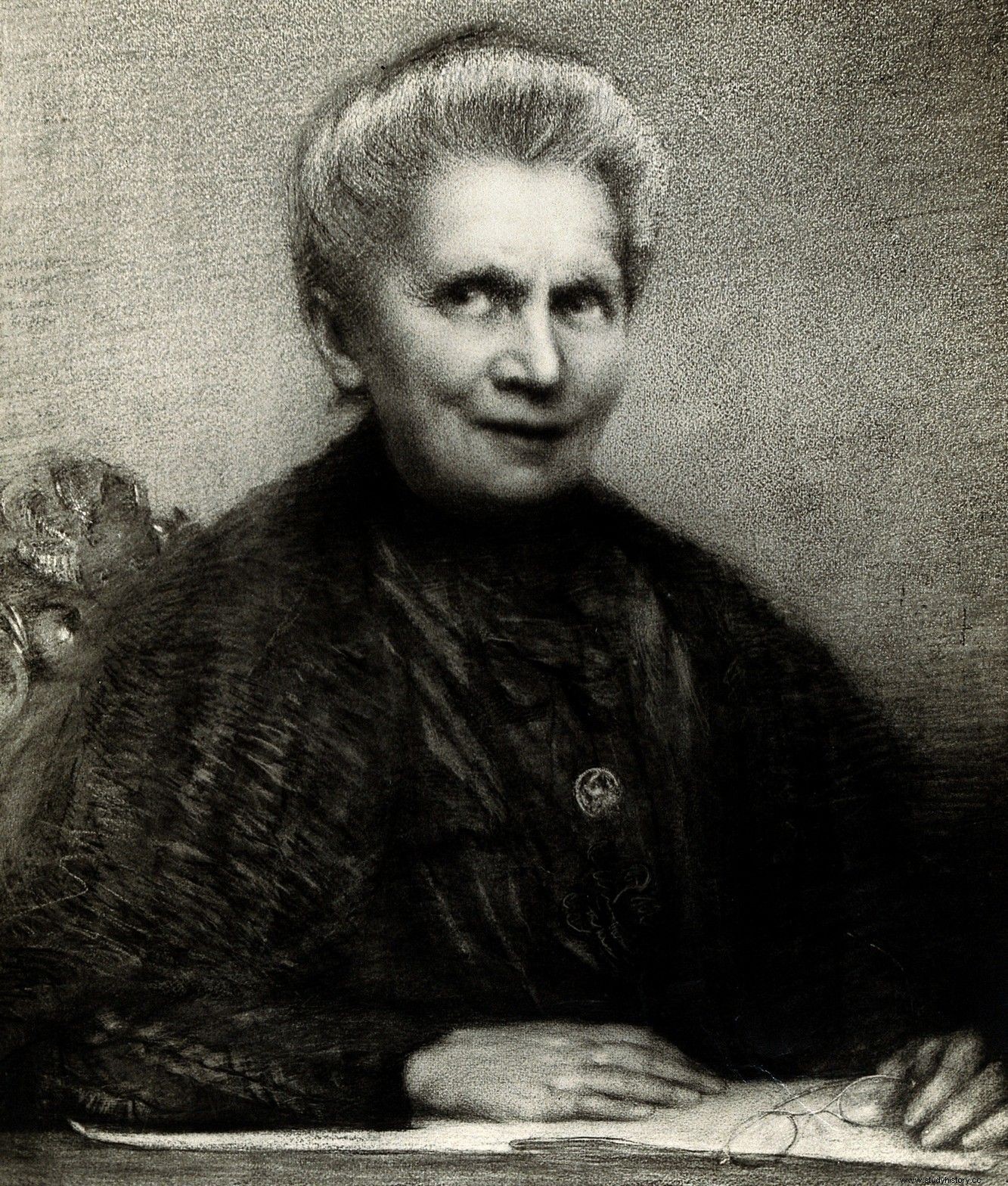
Maria Skłodowska-Curie also made her first scientific steps at the "Flying University" (source:Wellcome Images, license CC BY 4.0).
The authorities succumbed and in the 1894/95 academic year admitted three candidates to the MA studies in pharmacy who "proved sufficient general knowledge by their experience". After all, those were the times when the vast majority of women did not have the possibility to pass the Matura exam ... They were:26-year-old Jadwiga Sikorska, 22-year-old Stanisława Dowgiałło and 31-year-old Janina Kosmowska.
Even their own families were against the pioneers, warning: You won't get a husband, because men don't like learned women, or: No bachelor will come close to you, because he will smell you with carbolic acid and iodoform . But society, especially the liberal part of it, welcomed the first female students with enthusiasm. As Sikorska recalled:
Our popularity as the first students made us want to have us everywhere, so we were drawn to all sorts of associations, parties, participation in games, tours, and charity balls .
However, the ladies were still treated with distrust. They had to obtain permission to extend their studies every semester, and during some classes the students had to sit ... in bench ghettos marked "A place for ladies". Some professors also openly expressed their hostility. Antoni Wierzejski thundered: Only over my dead body will ladies go to zoology! - Well, I think the professor will die during the summer holidays, because we will go to zoology next year Kosmowska replied decisively.
KKK destroys women's scientific aspirations
Interestingly, all three women studying at the university in Kraków came from the Russian partition. Local girls were not so keen on academic knowledge. Kazimiera Bujwidowa believed that it was to blame ... the German upbringing, which made women accustomed to the thought that their destiny were three K: Kirche, Küche, Kinder [church, kitchen, children].
The resistance of families, even when the law allowed for women to study, was also strong in Greater Poland. My mother and the whole family opposed my going to university to study philosophy. There were also those who advised my mother to put me in a sanatorium for the mentally ill - complained Zofia Rzepecka from Wielkopolska.
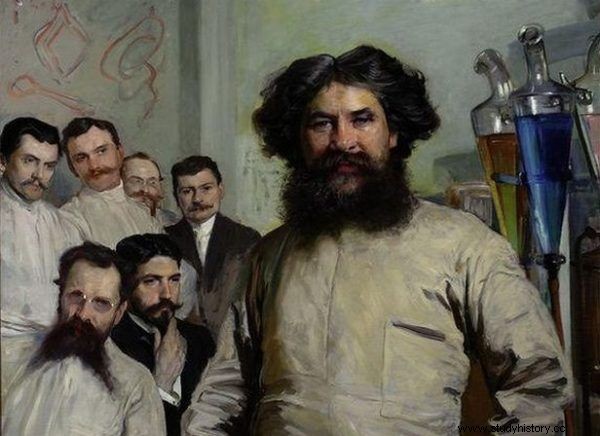
Many scientists were even more conservative than Professor Ludwik Rydygier. Some did not even let their wives read newspapers. In this painting by Leon Wyczółkowski from 1897, we see Rydygier surrounded by his assistants (public domain).
The decision to start studies was not made easier by the disrespectful attitude of the professors. Among others, Professor Ludwik Rydygier, who contributed to the development of medicine, was against the university education of women. Others echoed him, claiming that women have neither mental strength, nor the qualities of reason and energy. It was also feared that women ... would take away men's jobs and thus the ability to support their families! No wonder there was also a scholar who hid daily newspapers from his wife in the cupboard. And he was locking her up.
Problems with emancipation
Despite the fears of many conservatives, the students did not turn Krakow upside down. They also gave no food to the sensationalist newspapers. Until 1939, practically all cases (there were about 30 of them) of arrests, judgments or expulsion of female students from universities concerned ... their activity in the political sphere, above all promoting communism .
Access to universities did not do much damage to morals. This is what one of the first students, Bronisława Bobrowska, told about the situation at the Jagiellonian University:
Attending lectures and ateliers with men (…) put young girls' reputation at risk. Well, my friends stood up for this opinion, and certainly the strictest mother and the most meticulous aunt would not be able to care more so that even appearances would not "compromise" young girls .
Women attending university were, however, suspected of improper conduct. Zofia Kozłowska complained that the owners of the flat she was renting tried to convert her by reading her anti-socialist brochures aloud. As it failed, they wrote to my parents accusing me of a non-virtuous life - she recalled .
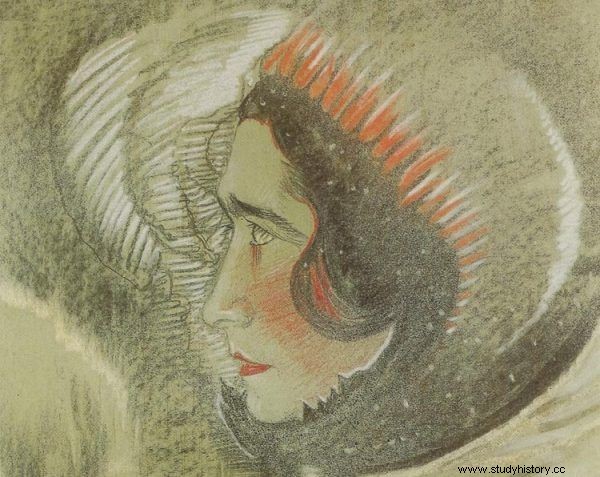
Not all female students acted like "secular saints." For example, Irena Krzywicka, who intended to lose virtue with her professor. A fragment of the portrait of the writer by Witkacy from 1928 (public domain).
Of course, there have been cases of mating marriages between students or between students and their former lecturers. However, the ladies made such decisions with caution, because they were associated with the risk of losing the right to study . This was the case with women studying in Galicia who married foreigners (including Poles from a partition other than Austria). This regulation changed only after 1918.
You also had to be careful about the reaction of those around you. Irena Krzywicka, a Warsaw student of Polish studies and a future promoter of sex education, who was still unmarried at the time, found out about it. She planned her first time… with one of the professors teaching her. Unfortunately, the clever plan was spoiled by her friends, who also invited themselves to this arranged romantic meeting.
And yet they assimilate knowledge
Girls with scientific aspirations, fought against by some scientists, also found many allies in the fight for equality. The supporters of studying women were, among others, professor Odo Bujwid and the dean of the Jagiellonian University, professor Napoleon Cybulski. The latter argued cleverly in favor of women's rights to university education, drawing attention to the political aspect of the issue. As he wrote: once women are admitted to university studies, all agitation in this matter will cease, spreading more and more wide circles to the detriment of women.
The students also had support from their friends. As Melchior Wańkowicz, then a student of agriculture at the Jagiellonian University, recalled: At the rally on the equality of women at Wszechnica, the clerk, Ms Korwin Szymanowska, called for us to treat women "more deeply and on a broader basis". We gave her a frantic applause for that .
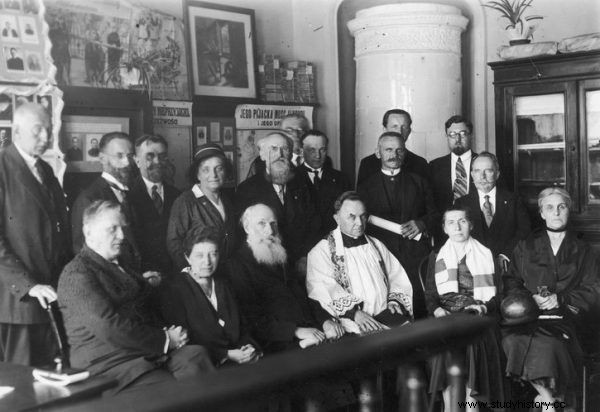
Polish researchers were active not only in the field of science. Zofia Daszyńska-Golińska, who had problems with her habilitation at the Jagiellonian University, was active in the Polish Society for Fighting Alcoholism "Sobriety". In the photo, Daszyńska-Golińska is seated second from the left, blessing the premises in 1931 (photo by Edward Dulewicz from the Illustrated Archive of the Illustrated Daily Courier, source:National Digital Archives, reference number 1-C-931).
The change was unstoppable. In the academic year 1897/98 there were already 6% of female students in Krakow, but this proportion was growing rapidly. In 1897, the authorities in Vienna finally decided to admit women to studies, and in 1900 - also to doctorates. The first two ladies obtained their degree in 1906. The first doctor with a doctorate was Helena Donhaiser-Sikorska, sister-in-law of the later General Władysław Sikorski. The Faculty of Law - until 1918, and the Academy of Fine Arts - until 1920 - defended the fairest sex in Kraków the longest. Women also had to wait for the possibility of habilitation:they obtained it only in independent Poland.
Sometimes the adherents of the old days even raised their heads. For example, an economist and a graduate of the University of Zurich, Dr. Zofia Daszyńska-Golińska, complained that the Jagiellonian University rejected her habilitation application with the statement that her academic achievements were not outstanding in European science. Ironically, she added that relations with Krakow professors grew considerably cold for each new book I published.
